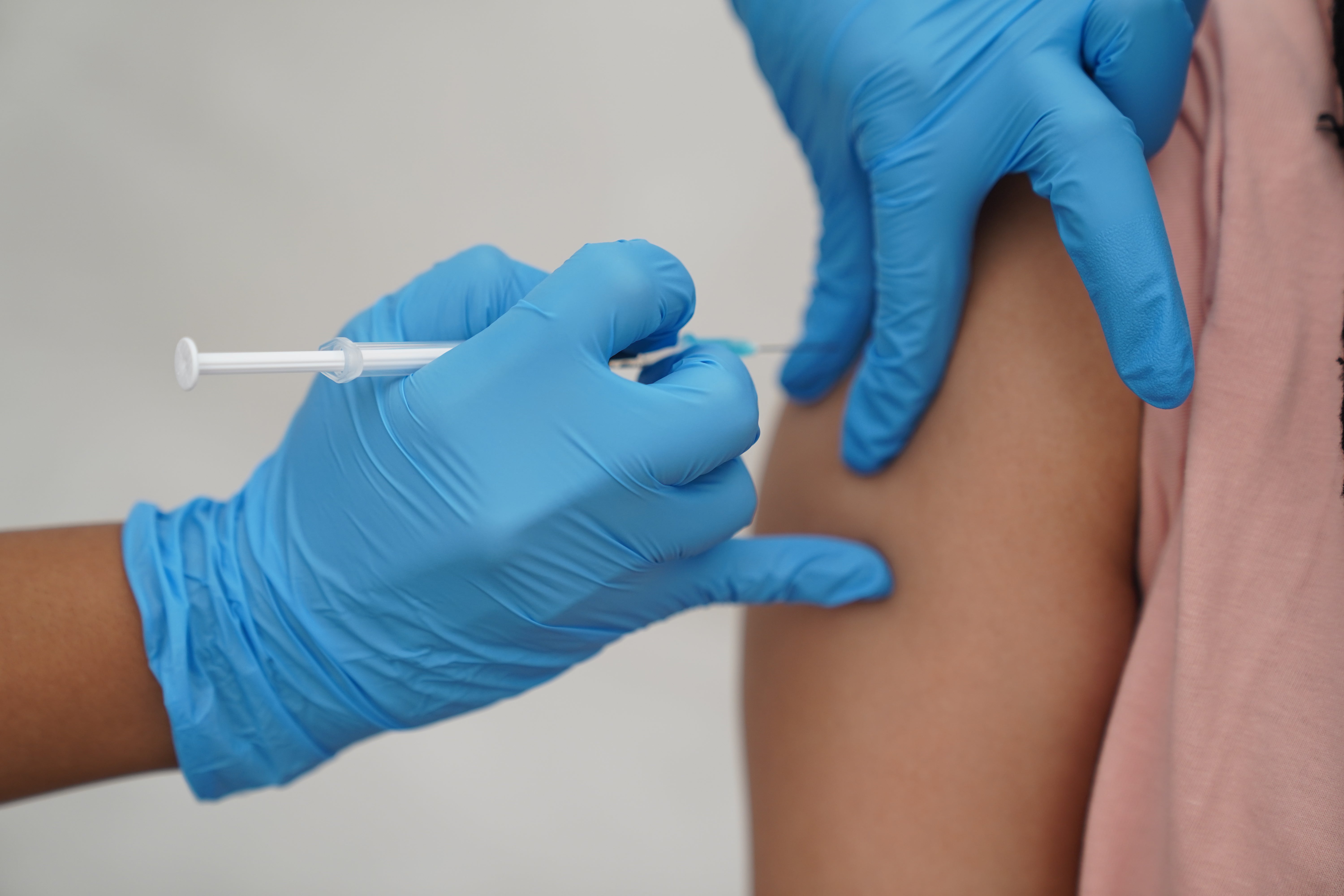UK Covid infection levels reach record high, data shows
This is the highest number since comparable figures became available in autumn 2020, the Office for National Statistics said.

Your support helps us to tell the story
From reproductive rights to climate change to Big Tech, The Independent is on the ground when the story is developing. Whether it's investigating the financials of Elon Musk's pro-Trump PAC or producing our latest documentary, 'The A Word', which shines a light on the American women fighting for reproductive rights, we know how important it is to parse out the facts from the messaging.
At such a critical moment in US history, we need reporters on the ground. Your donation allows us to keep sending journalists to speak to both sides of the story.
The Independent is trusted by Americans across the entire political spectrum. And unlike many other quality news outlets, we choose not to lock Americans out of our reporting and analysis with paywalls. We believe quality journalism should be available to everyone, paid for by those who can afford it.
Your support makes all the difference.Covid infection levels in the UK have reached record levels, with 1.4 million people estimated to have had Covid-19 last week, new figures show.
This is the highest number since comparable figures began in autumn 2020, while around one in 45 people in private households in England having Covid-19 in the week to December 16.
This is up from one in 60 the previous week, according to the latest Office for National Statistics (ONS) data which was published on Thursday.
One in 45 is the equivalent of about 1.2 million people, and is the highest number since the ONS began estimating infection levels for England in May 2020.
The percentage of people testing positive for Covid-19 in the latest week is estimated to have increased in all regions of England except the North East South West and West Midlands, where the trend is uncertain, the ONS said.
In London, around one in 30 people was likely to test positive in the week to December 16 – the highest proportion for any region.
When modelling the level of Covid-19 infections among different age ranges in England, the ONS said rates have increased in the latest week for all groups except those from school year 7 to 11 and for people aged 70 and over, where the trend is uncertain.
Rates were highest for those aged two to school year 6, at 5.9%.
In Wales, around one in 55 people is estimated to have had Covid-19 in the week to December 16, unchanged from the previous week and below the recent record high of one in 40.
In Northern Ireland, the latest estimate is one in 50 people, also unchanged from the previous week and slightly below the record high of one in 40 in mid-August.
For Scotland, the latest estimate is one in 70, up from one in 80 the previous week and below September’s peak of one in 45.
Meanwhile, the ZOE Covid study estimates that on average one in 45 people in the UK currently have symptomatic Covid, increasing to one in 43 in England.
In Wales it was one in 47, and one in 67 in Scotland, it added.
The ZOE Covid study said that cases have “exploded” in the 18 to 54 age groups, which have overtaken 0 to 17-year-olds who have had the highest rates since July.
According to new analysis, published on Thursday, the ZOE study estimates that half of all people experiencing new cold-like symptoms are likely to have symptomatic Covid-19 and not just a “harmless cold”.
This has been calculated by comparing the number of new cases of a cold-like illness to the number of new cases of confirmed Covid, it added.
Professor Tim Spector lead scientist on the ZOE Covid Study app, said that public messaging needed to change “urgently” to acknowledge that for many people Covid symptoms will feel more like a common cold.
He added: “Over the past few days, we saw self-isolation rules already causing havoc for our frontline workers, so I’m pleased to see that the Government has reduced the isolation period down to seven days.
“However, what continues to shock me is the misinformation in their latest stay-at-home guidance about the symptoms of Covid.
“ZOE data clearly shows that the most important symptoms are no longer a new continuous cough, a high temperature or loss of taste or smell.
“For most people, an Omicron positive case will feel much more like the common cold, starting with a sore throat, runny nose and a headache.
“You only need to ask a friend who has recently tested positive to find this out. We need to change public messaging urgently to save lives as half of people with cold-like symptoms now have Covid.”
Prof Spector also said that to slow the spread of Omicron the public should avoid socialising indoors, check people they are meeting are free of cold symptoms, test before meeting up, and get fully vaccinated.
He added: “The number of new symptomatic cases has exploded over the last week, making it the biggest jump in cases I’ve seen since we started the ZOE Covid study.
“Whilst the figures paint a worrying picture, the good news is that our preliminary data, based on around 2,500 probable cases reported on the ZOE app suggests that Omicron is more mild that Delta.”